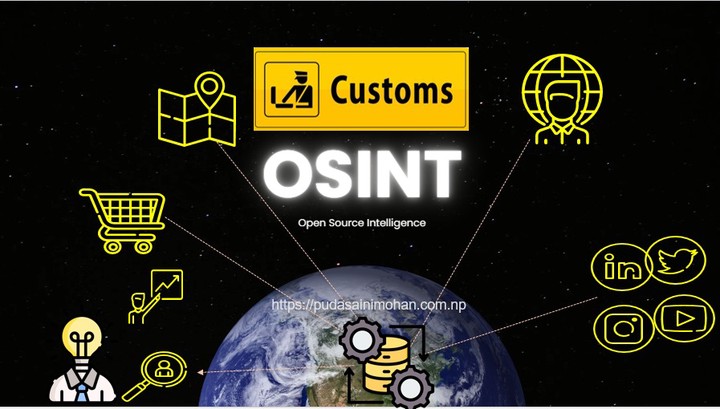OSINT: Revolutionizing Customs Intelligence in the Digital Age

In today’s digital age, many customs administrations are turning to Open Source Intelligence (OSINT) to enhance traditional intelligence-gathering methods. OSINT involves collecting and analyzing publicly available information from sources such as social media, websites, public records, and news outlets to generate actionable intelligence. Although the concept of OSINT is not new, dating back to World War I when nations recognized the value of intercepting open communications, its application has evolved significantly with advancements in technology. Today, customs authorities leverage OSINT to identify potential threats, monitor trade patterns, and ensure regulatory compliance, making it an essential tool for modern risk management and trade facilitation.
The Evolution of OSINT in Customs
Historically, customs operations relied heavily on physical inspections and paper-based processes. However, the rise of the internet and global connectivity has transformed these practices. OSINT now enables authorities to monitor online platforms, track digital interactions, and uncover suspicious activities that were once invisible. This shift has been driven by the proliferation of user-generated data on social media, increasing demand for transparency from businesses, and a global surge in internet usage. As the volume of digital data grows, OSINT has become an essential component of modern customs intelligence. For instance, customs officials can now monitor social media to detect patterns of trade fraud or use AI-powered tools to cross-check trade documents with public data to ensure compliance.
Key OSINT Sources in Customs Administration
Digital Footprints
-
Social Media Platforms: Networks like Facebook, Twitter/X, Instagram, and LinkedIn provide insights into trade patterns and suspicious activities.
-
Corporate Websites and Press Releases: Help verify company legitimacy and reveal partnerships or financial information.
-
Online Marketplaces: Platforms such as Amazon and Alibaba can be analyzed for price reference, counterfeit goods and illegal trade.
-
Shipping and Logistics Forums: Expose abnormal trade routes and hidden smuggling networks.
Public Records
- Government Databases: Access to trade registries and tax records aids in compliance verification.
- Court Records: Reveal previous trade violations and suspicious legal activities.
- Geotagged Data and Satellite Imagery: Geospatial intelligence (GEOINT) helps map smuggling routes and identify hotspots.
Media and Academic Sources
- News Articles: Provide real-time updates on emerging threats and sanctions.
- Industry Publications: Offer sector-specific insights and market analyses.
- Academic Research: Studies reveal trade patterns and supply chain vulnerabilities.
Applications of OSINT in Modern Customs Operations
- Risk Assessment and Profiling: OSINT enables comprehensive risk profiling by analyzing historical trade patterns, monitoring social media for suspicious behavior, and leveraging predictive analytics to anticipate high-risk periods.
- Fraud Detection: Customs authorities use OSINT to detect trade-based money laundering, price manipulation, and shell companies by cross-referencing documents with online data to identify discrepancies.
- Smuggling Prevention: Authorities employ advanced OSINT techniques such as:
- Real-time monitoring of shipping movements.
- Geospatial mapping of high-risk routes.
- Integration of satellite imagery with trade data to track illegal goods.
Technical Implementation
Tools and Technologies
- Data Scraping: Automates data extraction from online sources.
- Social Media Monitoring Platforms: Tracks real-time activities across various networks.
- Geospatial Mapping Systems: Combines satellite data with OSINT for enhanced analysis.
- Machine Learning Algorithms: Identifies patterns and anomalies for effective risk detection.
Integration with Existing Systems
Successful OSINT implementation requires seamless integration with risk management platforms, real-time data processing capabilities, and secure information-sharing protocols.
Legal and Ethical Considerations
Customs authorities must comply with data protection regulations like GDPR while respecting privacy laws. Implementing multi-source verification is essential to ensure the accuracy of collected data. Adhering to ethical standards is crucial for the responsible use of public information.
Best Practices for Effective OSINT Deployment
To maximize the benefits of OSINT:
- Establish Dedicated OSINT Units: Form specialized teams trained in data analysis and intelligence gathering.
- Regular Source Evaluation: Continuously assess the relevance and credibility of data sources.
- Cross-referencing Data: Validate OSINT findings with official records to ensure reliability.
Challenges in OSINT Implementation
- Information Overload: Utilize AI-powered filtering tools and automated alerts to focus on relevant data.
- Data Quality Issues: Implement multi-layer verification processes alongside source credibility scoring.
Conclusion
OSINT has revolutionized customs operations by providing real-time insights that enhance risk assessment, fraud detection, and smuggling prevention. As technology continues to evolve, the importance of OSINT will only grow. Customs authorities must stay updated with the latest tools while adhering to ethical standards. Proper implementation of OSINT strategies ensures secure global trade while effectively combating illicit activities.